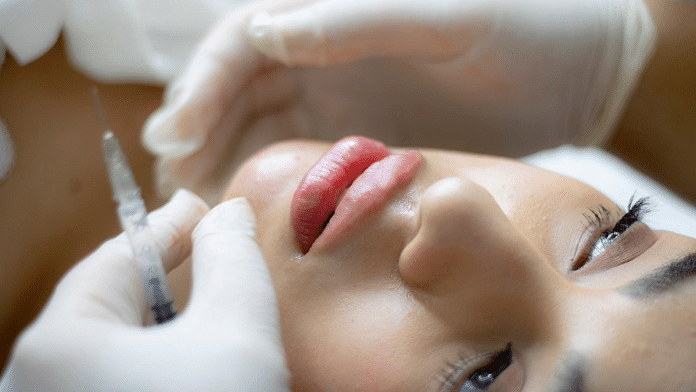Fast forward to the 21st century, and you have dusky skin celebrities opting for skin whitening injections, with some of them also denying it.
The discovery
So, here’s the interesting titbit. Glutathione, the main compound in skin whitening injections, was never even meant for making your skin fairer.
It was originally used as an antioxidant in chemotherapy. That’s when doctors noticed that patients were coming out of their chemo sessions looking quite radiant. When the beauty industry got wind of it, a trend was born.
The science
Glutathione is a natural antioxidant produced in your liver. It’s also known as the ‘master antioxidant’ because of its crucial role in detoxification, supporting the immune system, and maintaining skin health. It fights free radicals, keeps your liver healthy by detoxifying it, and most importantly, blocks melanin production—which means fairer skin.
But reducing melanin production won’t turn you into Snow White. This is because a good dermatologist can make you only as fair as the skin behind your ear. So, take a good look at your skin tone behind your ear, inner thighs or chest area, that’s the shade that is humanly possible for you to achieve.
Skin whitening injection works quicker and is more effective than topical methods—creams and serums cannot compete with the absorption rate of these injections.
Also read: K-beauty looks great on your feed, but it might be picking a fight with your Indian skin
How does it work?
Now that you know the science, let’s know the process of getting a skin whitening injection.
Your dermatologist will first do a blood test because glutathione injections don’t work in case of specific vitamin deficiencies.
Then a glutathione solution is prepared that contains vitamin C, thioctic acid, alpha-lipoic acid, ascorbic acid, kojic acid, pro-vitamins like B3 and B5, vitamin E, hyaluronic acid, collagen, and zinc, among other minerals that are beneficial for your skin. This concoction is supposed to be customised based on your skin type and overall goals.
The solution is then administered intravenously for peak absorption.
Typically, glutathione is administered 2-3 times a week before the dosage is reduced to once a week.
For some, the results are visible in 5-10 sessions, but it could also take 20-30 sessions.
The aftercare
When you visit your dermatologist for skin whitening injections, make sure to discuss the aftercare in detail.
Aftercare and maintenance are just as important as the injections themselves. So, always consult a licensed and trustworthy dermatologist to avoid all potential negative consequences.
Here are some things you must take care of after getting glutathione injections.
- Stay hydrated after the injection has been administered. It helps flush out any toxins from the body.
- Always use sunscreen to protect your newly glowing skin.
- Do not smoke or drink excessively as that would impact your glutathione levels.
- Check with your dermatologist if you need maintenance doses for sustained results.
Also read: Carbon laser treatment is your shortcut to glow, but only if you skip cheap clinics and hacks
The verdict
While the choice is always going to be yours, it’s important to understand that skin whitening is deeply rooted in colourism. It’s interesting to note that even brands are slowly moving away from terms like ‘whitening’, and have started using words like ‘brightening’ instead, which is what these glutathione injections do.
Finally, if you’re considering skin whitening injections, always consult a trusted dermatologist, keep your expectations realistic, and also, ask yourself – are you doing this for yourself?
Dr Deepali Bhardwaj is a Consultant Dermatologist, Max Hospital, Saket. She is also an anti-allergy specialist, laser surgeon, and internationally trained aesthetician. She tweets @dermatdoc. Views are personal.
(Edited by Aamaan Alam Khan)
var myListener = function() { document.removeEventListener('mousemove', myListener, false); lazyloadmyframes(); };
document.addEventListener('mousemove', myListener, false);
window.addEventListener('scroll', function() { if (ytflag == 0) { lazyloadmyframes(); ytflag = 1; } });
function lazyloadmyframes() { var ytv = document.getElementsByClassName("klazyiframe"); for (var i = 0; i < ytv.length; i++) { ytv[i].src = ytv[i].getAttribute('data-src'); } }








